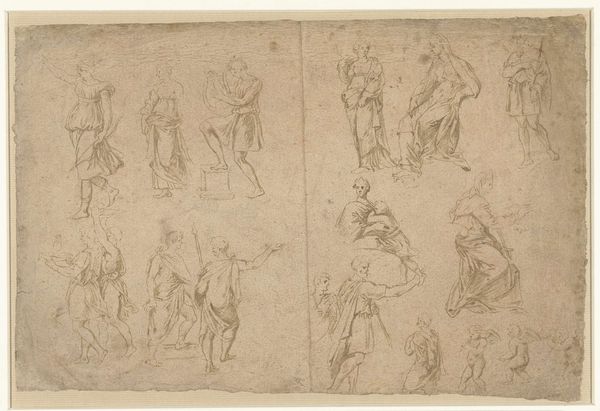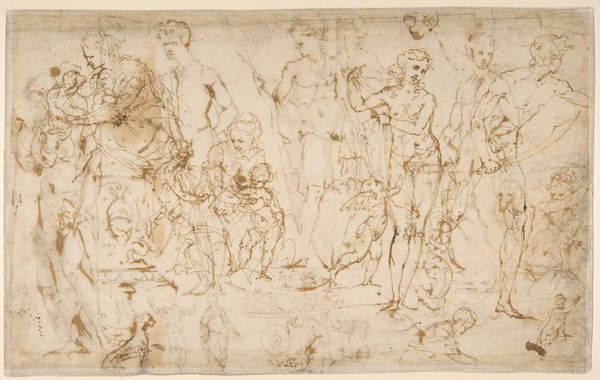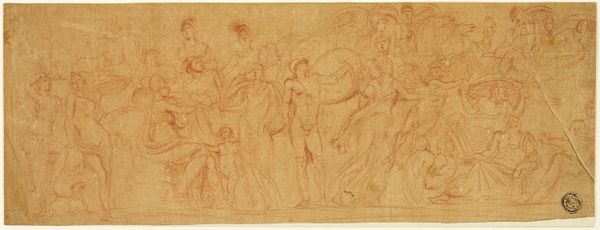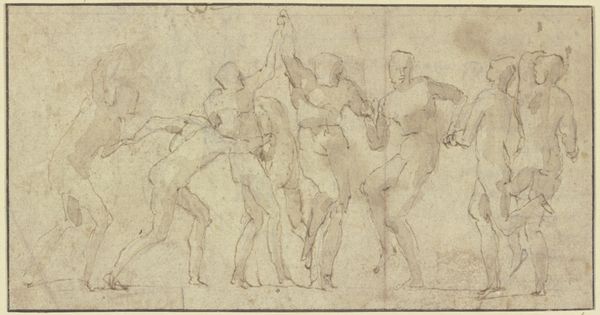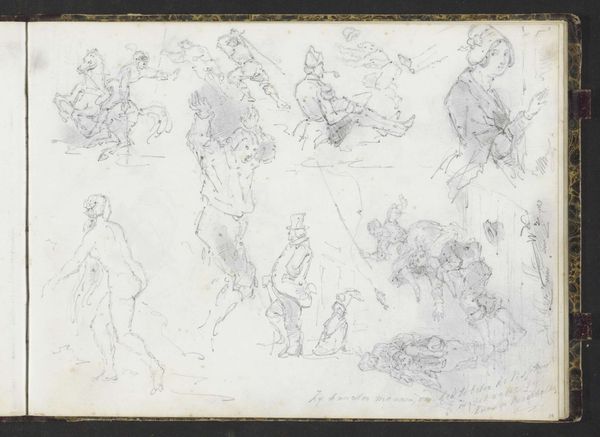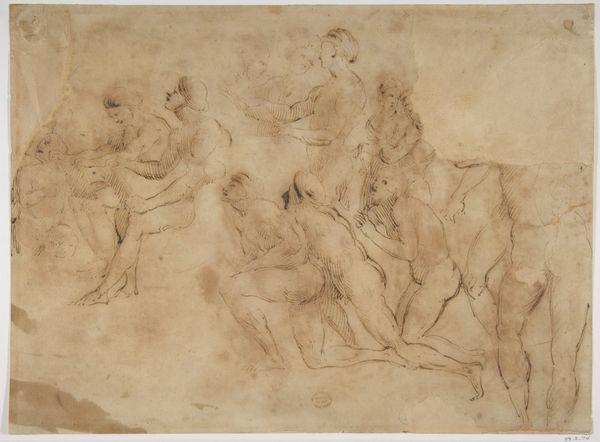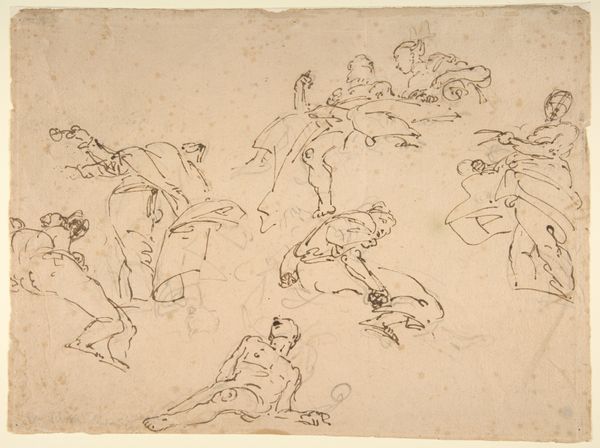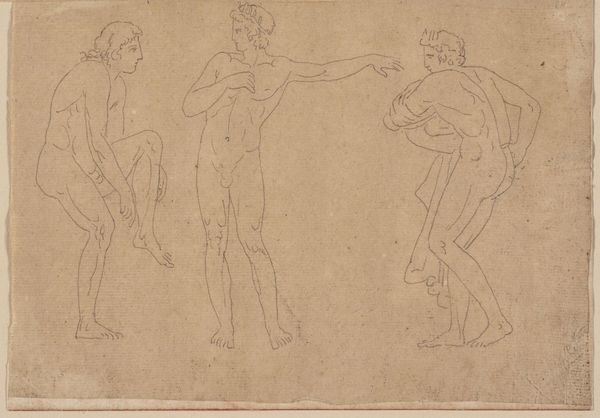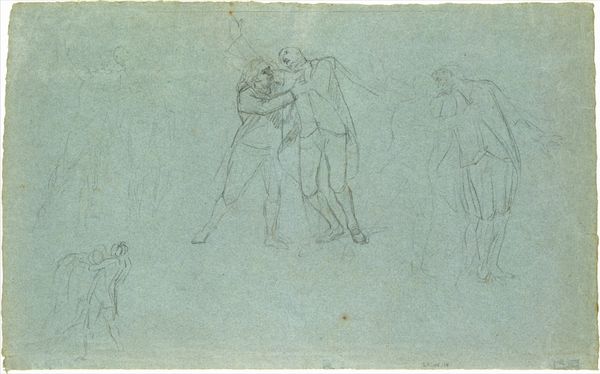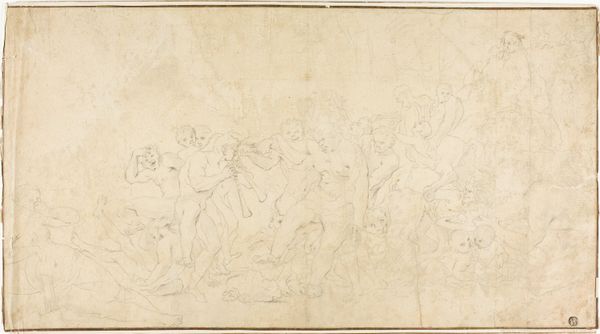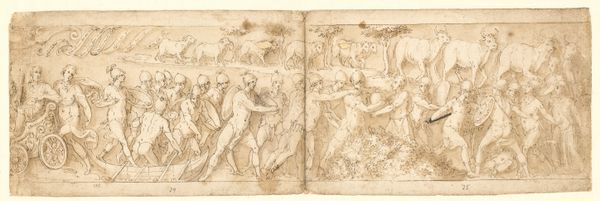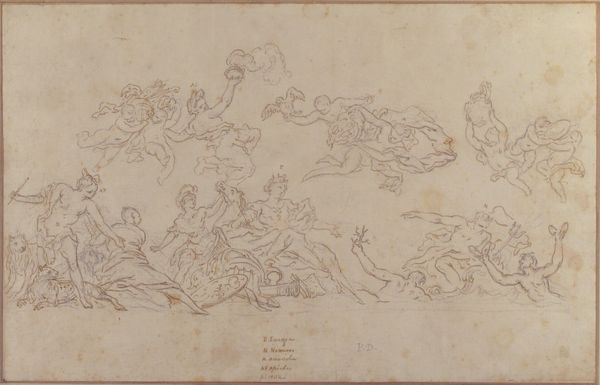
drawing, pencil
#
drawing
#
greek-and-roman-art
#
classical-realism
#
figuration
#
pencil
#
academic-art
#
nude
#
male-nude
Dimensions: 8 1/2 x 12 1/4 in. (21.6 x 31.1 cm)
Copyright: Public Domain
Curator: Before us, we have an 18th-century drawing titled "Bacchic Scene," presently residing here at the Metropolitan Museum of Art. It's rendered in pencil, in the style of Classical Realism and Academic Art, displaying a tableau of figures suggestive of Greek and Roman art. Editor: Wow. At first glance, it reminds me of looking at an architect’s notebook. Very linear, skeletal…it feels like I’m seeing these classical forms in the process of being born onto the page. Kind of a raw, sensual energy, even with just the pencil strokes. Curator: Indeed. It speaks to the period’s preoccupation with reviving classical ideals and artistic conventions. You can almost envision the artist studying antique sculptures, attempting to capture their essence and translate them into a fresh, academic idiom. This approach emphasizes idealized form, as seen through carefully rendered figures. Editor: Totally. And the academic style comes through in the attention to anatomy, even if the poses are slightly stiff. The choice of the "Bacchic scene," that tips us off to themes of pleasure, frenzy, and excess... which maybe clashes a bit with the super restrained lines of the drawing. It's a fun tension. Like, who gets to control pleasure? Curator: Exactly. And what purpose do these representations serve, especially within the evolving societal norms of the 18th century? Were they meant as mere exercises in skill, assertions of cultural prestige through classicism, or explorations – perhaps even subtle subversions – of moral expectations, as the naked male body and bacchic imagery grew contentious across Europe? Editor: I think all of that lives in this drawing somehow. It feels kind of revolutionary, even while drawing on the ancient world. These weren’t exactly subjects you’d display at the dinner table at the time. Even in sketch form. Curator: Which raises more questions about where and how art functioned within society back then – issues of censorship, patron preferences, and the artist’s standing, perhaps trying to find the edges of those boundaries. Editor: Well, looking at it, it still feels potent, like it’s pushing some buttons even now. That’s pretty powerful for a pencil sketch made hundreds of years ago. Curator: Indeed. The work's enduring relevance lies in the very questions it implicitly raises concerning cultural control, artistry, and representation across different times.
Comments
No comments
Be the first to comment and join the conversation on the ultimate creative platform.
